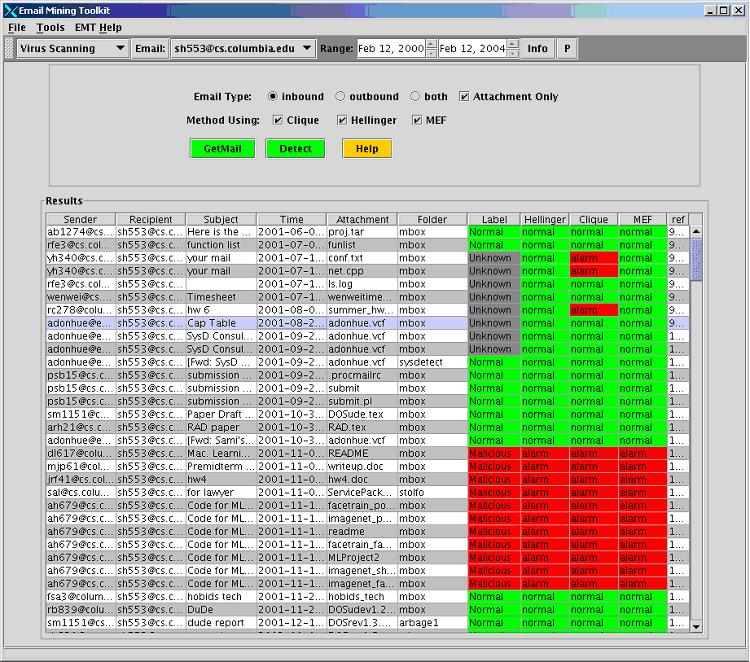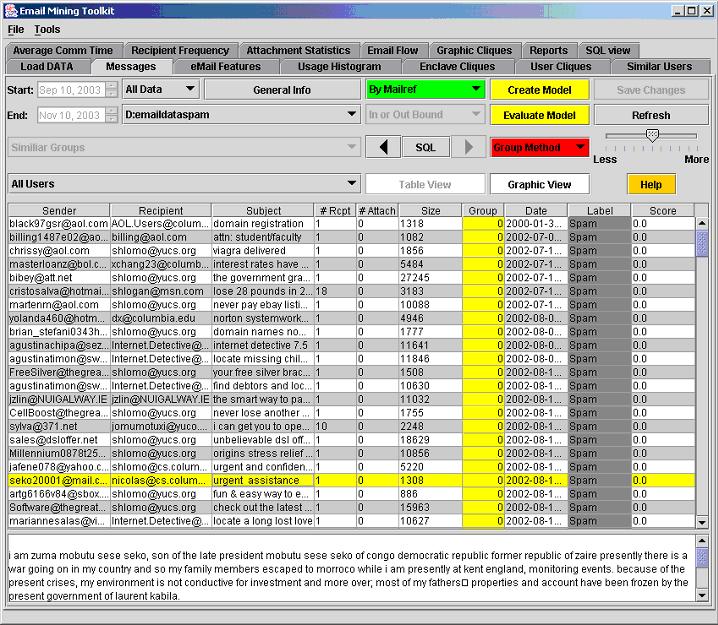
Email Mining Toolkit (EMT)
The Email Mining Toolkit (EMT) is a data mining system that computes behavior
profiles or models of user email accounts. This toolkit is useful for report
generation and summarization of email archives, as well as for detecting email
security violations when incorporated with a real-time violation detection
system, such as the MET system.
EMT, which includes approximately 13,200 lines of code, is implemented in Java
providing a GUI implementing an interface to an underlying relational database
application. It provides the means of loading, parsing and analyzing email
messages from a wide range of storage formats. It not only demonstrates the
statistics of email account behavior, it also computes the volume and velocity
of emails exchanged between parties, analyzes specific content and patterns, and
explores social relationships between groups of users, and the relative rankings
of importance of different individuals in an organization.
Moreover, EMT extends these kinds of analyses to model “user behavior” at a very
fine granularity. It models the behavior of individual user email accounts or
groups of accounts, and can be used to detect changes in behavior that may be of
interest in forensic analyses. These features of EMT provide the means to detect
fraudulent misuse and attacks such as viruses and Spam (unwanted) email.
EMT includes 15 different features and models. The statistical models that
include stationary and non-stationary user profile are used to generate user
behavior models. These models include
• Message Table where individual emails may be automatically classified by built
in machine learning subsystems,
• Usage Histogram revealing a user’s typical daily email behavior,
• Similar Users which identifies groups of emails users who behave in similar
ways ,
• Recipient Frequency providing a detailed analysis of the typical communicants
with a user and
• Attachment Statistics detailing attached files serving as a personal file
system of a user, as well as the statistical analyses including the birth rate,
lifespan, incident rate, prevalence, threat, spread, and death rate useful in
identifying interesting attachments and viral attachments.
The analyses built in to EMT concerning groups of accounts and their
communication is provided to detect violations of group behavior. These models
include
• Enclave Clique groups of users who frequently pairwise exchange messages,
• User Clique the set of accounts a particular user typically emails as a group,
• Email Flow revealing how a single message produces a web of new communication
throughout an organization and
• Average Communication Time that views a user’s typical response rates to
individuals, indicating the relative importance of communicants.
• These models apply algorithms such as Chi Square, Hellinger Distance,
Mahalanobis Distance, N-Gram analysis, Naïve Bayes classifier, TF-IDF
categorization and graphical cliques analysis. By combining these features, EMT
may be applied to a variety of applications and detection tasks.
EMT’s graphical user interface provides an easy to use interface to execute
these functions and that visualizes results in tabular form with displays of
plots and histograms that are easy to understand.
Related publications:
Wei-Jen Li, Shlomo Hershkop, Salvotore J. Stolfo, Email Archive Analysis Through Graphical Visualization.
ACM CCS VizSEC/DMSEC'04[ PDF ]
Salvotore J. Stolfo, Wei-Jen Li, Shlomo Hershkop, Ke Wang, Chia-Wei Hu, Olivier Nimeskern, Detecting Viral Propagations Using Email Behavior Profiles, ACM Transactions on Internet Technology (TOIT), May 2004. [ PDF ]
Some EMT screen shots are shown bellow:
General email client window / Machine Learning analysis

Graphical clique analysis
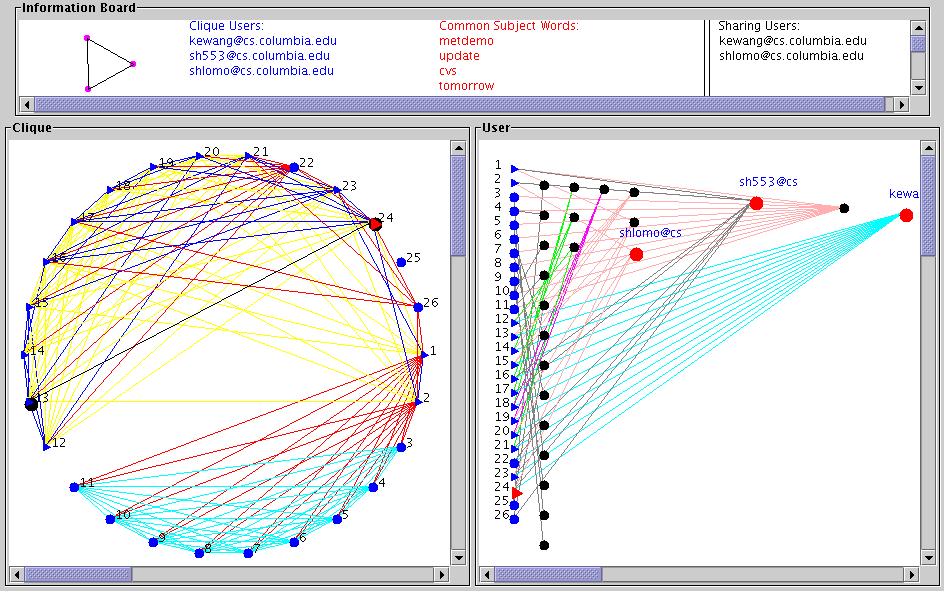
Email flow analysis
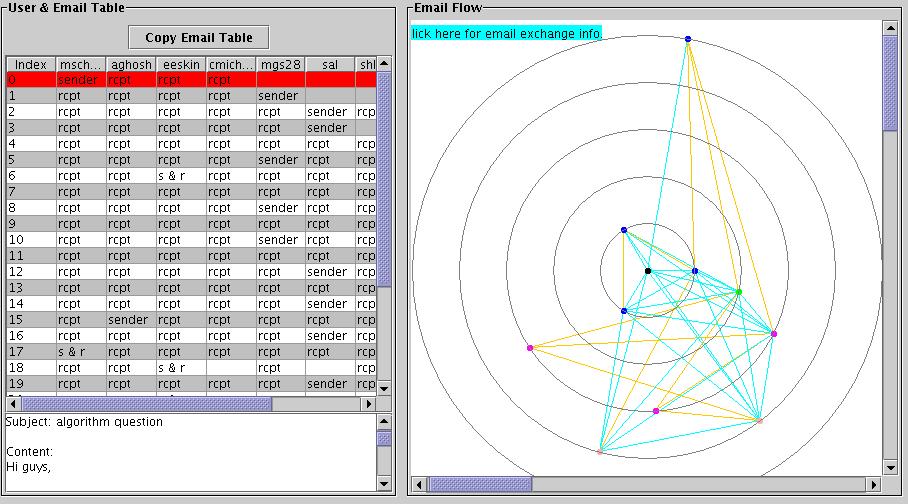
Similar Users
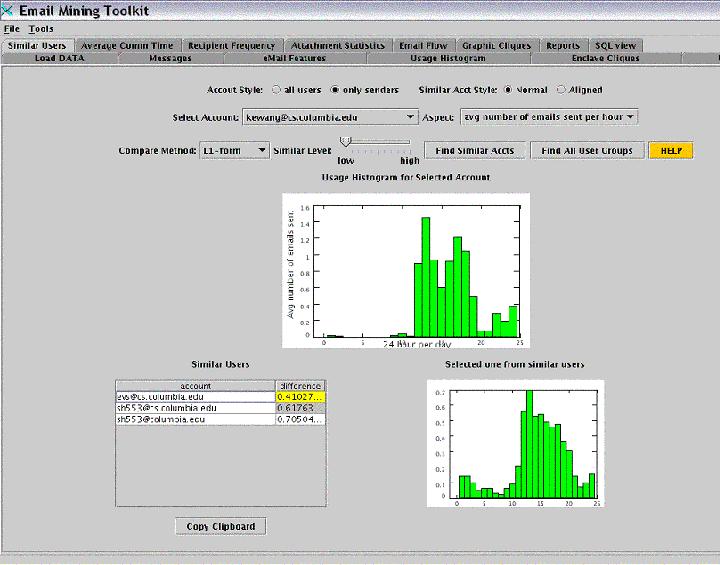
Usage Histogram
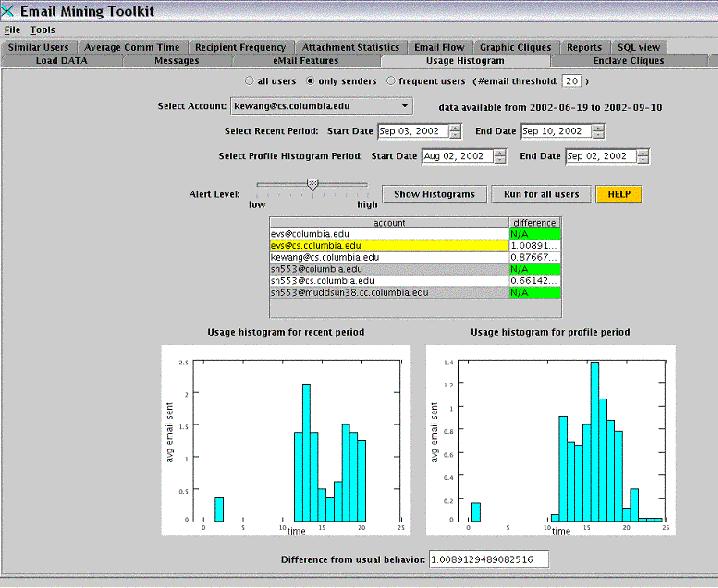
Usage Frequency Analysis
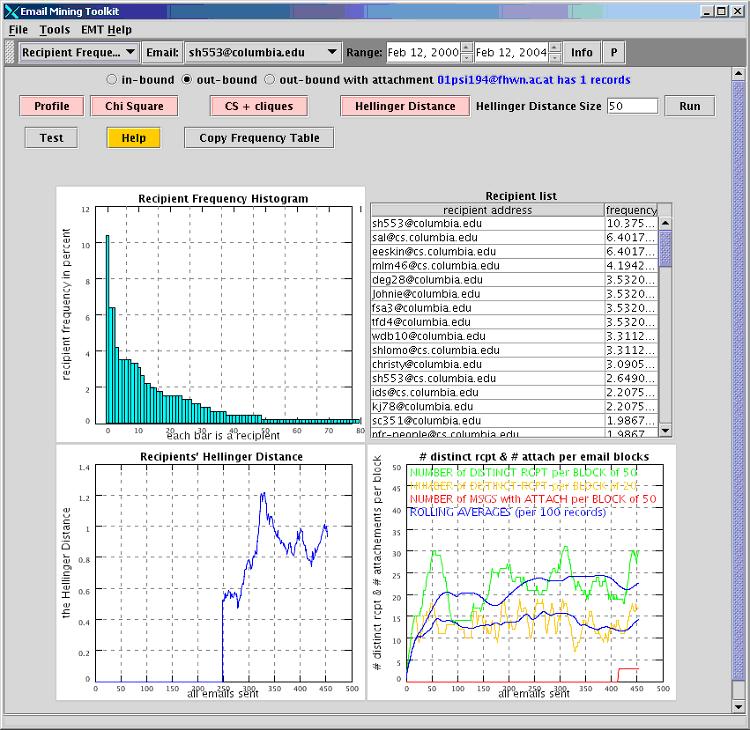
Virus simulation and detection
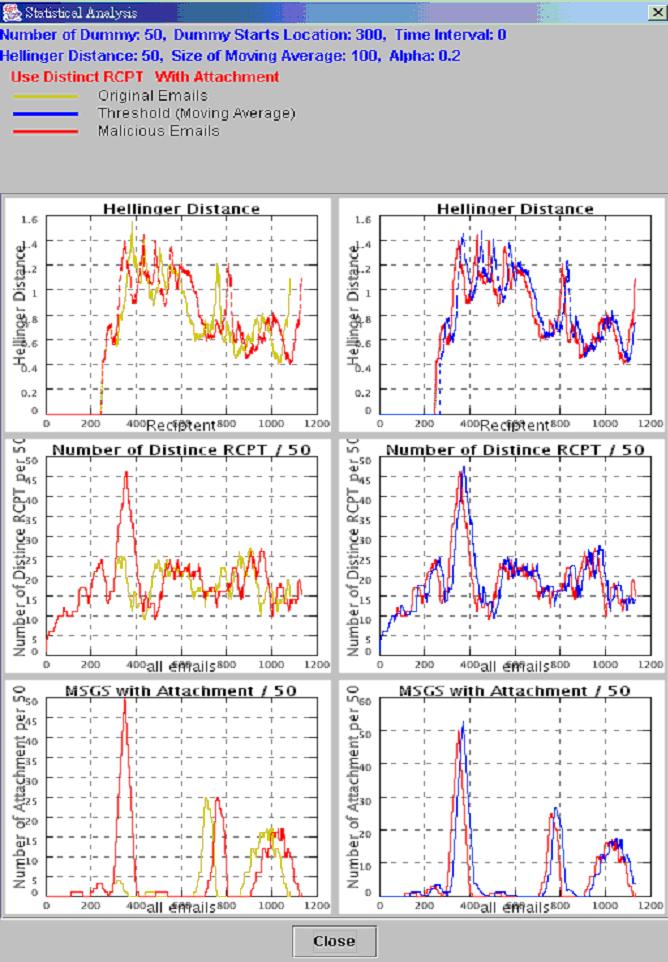
Virus detection
